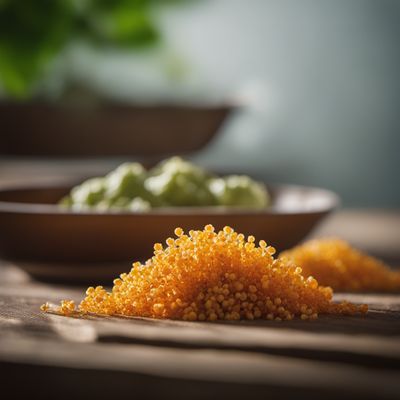
Ingredient
Other cultivated fungi
Exquisite Edible Fungi
Beyond the well-known mushrooms, there is a vast array of other cultivated fungi that offer unique flavors, textures, and culinary possibilities. From delicate enoki mushrooms to meaty lion's mane mushrooms, these exquisite edible fungi add depth and complexity to a wide range of dishes.
Origins and history
The cultivation of fungi for culinary purposes dates back centuries, with various cultures around the world incorporating them into their traditional cuisines. These lesser-known cultivated fungi have gained popularity in recent years due to their distinct flavors and potential health benefits.
Nutritional information
Other cultivated fungi offer a range of nutritional benefits, including vitamins, minerals, and antioxidants. They are low in calories and fat, making them a healthy addition to meals. Additionally, certain fungi, such as lion's mane mushrooms, have been studied for their potential cognitive and immune-boosting properties.
Allergens
While other cultivated fungi are generally safe to consume, individuals with mushroom allergies should exercise caution. It is recommended to consult with a healthcare professional if you have any concerns or known allergies.
How to select
When selecting other cultivated fungi, look for specimens that are firm, plump, and free from blemishes or signs of decay. Avoid mushrooms that appear slimy or have a strong odor. Opt for fresh, locally sourced varieties whenever possible for the best quality and flavor.
Storage recommendations
To maintain the freshness of other cultivated fungi, store them in a paper bag or a breathable container in the refrigerator. Avoid washing them until ready to use, as excess moisture can promote spoilage. Use them within a few days of purchase for optimal flavor and texture.
How to produce
Growing other cultivated fungi at home can be a rewarding experience. Depending on the variety, they can be cultivated indoors or outdoors, using specific growing mediums and environmental conditions. Research the specific requirements for the fungi you wish to grow and follow a reputable cultivation guide or consult with an expert.
Preparation tips
Other cultivated fungi can be prepared in various ways, depending on their characteristics. They can be sautéed, roasted, grilled, or used in soups, stews, stir-fries, or pasta dishes. Experiment with different cooking techniques and flavor combinations to enhance their natural taste.
Culinary uses
Other cultivated fungi are versatile ingredients that can be used in a wide range of culinary applications. They add depth and umami flavor to dishes such as risottos, pizzas, omelets, or vegetable stir-fries. They can also be used as a meat substitute in vegetarian or vegan recipes.
Availability
Other cultivated fungi are commonly available in well-stocked grocery stores, specialty food markets, or farmers markets. They may also be found in Asian or gourmet stores that offer a diverse selection of mushrooms and fungi.
More ingredients from this category » Browse all

Fusarium venenatum
The Fungal Protein: Fusarium Venenatum

Horse mushrooms
The Majestic Fungi of the Earth

Pleurotus
The Versatile Oyster Mushroom

Corn smuts
The Mysterious Corn Fungus

Paddy straw mushroom
The Golden Fungi

Wood blewits
The Enigmatic Wood Blewits: A Hidden Gem in the Culinary World

Pom-pom blancs
The Delicate Delight: Exploring the World of Pom-pom Blancs

Shiitake
The Mighty Shiitake

Shimeji
The Delicate Mushroom: Shimeji

Nameko
The Versatile Mushroom

Common mushrooms
The Versatile Fungi

Snow mushrooms
The Delicate Beauties of the Forest